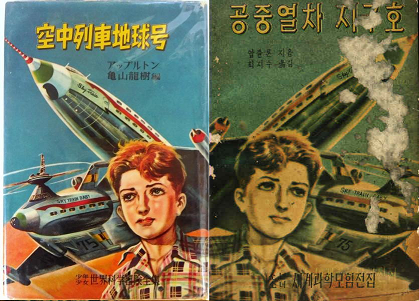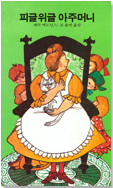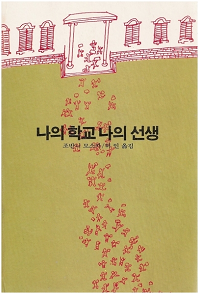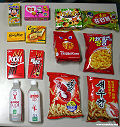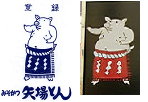Japanese originals & Korean plagiarism snacks
Common sense does not go in Korea.
You may say “it is unlikely”, but it is really not. Have a look at the following examples.
A lot of Korean copies of Japanese products
Even the packaging looks exactly the same.

The packages are also similar to the Japanese originals.
Raw chocolate

Raw chocolate

It considerably resembles not only the texture to melt as soon as you put “Royce’s Raw chocolate” in your mouth, but also the form and the package.
Furthermore, the number of the chocolate in the “Raw chocolate ‘Market O’” is the same as the number of that of “Royce’ Raw chocolate ‘Au lait’” (20).
Many Koreans said they had thought that “Royce’s Raw chocolate” was imported formally, and they showed negative response to the imitation “Raw chocolate ‘Market O’”.
On the other hand, the Orion expressed a sense of disappointment for such a “plagiarism discussion”. The Orion said “if you eat them, you will know the tastes are definitely different. The package became similar to Japanese chocolate, because moisture must not enter in it”. The Orion strongly excused itself as always. (Korea・Life January 18, 2018)


 The corn of the cone type of Giant Cone (Glico, Japan) is filled with ice cream. Chocolate is coated at the top of the ice cream, and nuts and chocolate cookies are put on the top.
(wikipedia)
The corn of the cone type of Giant Cone (Glico, Japan) is filled with ice cream. Chocolate is coated at the top of the ice cream, and nuts and chocolate cookies are put on the top.
(wikipedia)
As for Super Cone (Binggeure), the position of the product name, the design of the letters and also the color of the wrapping paper made of blue and red are similar to those of the Japanese products.
Binggeure said as always, “Super Cone does not imitate Giant cone.” However, it added, “We are considering the change of the package”.
(Korea・Korea Economy April 11, 2018)
Binggeure said that it would consider the change of the package, but it changed only the design of the wrapping paper slightly and continues to sell that. (Korea・namu.wiki)
|
Aerial (2009) YAMAZAKI-BISCUITS (Japan) 
|
Sakusaku Corn (2015) Seven-Eleven Japan 
|
ORION (Korea)

(Korea・Asia Economy March 22, 2017)
The Korean company ORION tries to deny imitation as always, but it confesses that it studied the process of manufacture of the Japanese products.


“Hiyoko” was born in YOSHINODO in Iizuka-city, Fukuoka, Japan in 1912.

Everything is same. The Korean company explained, “We invited an engineer from Japan. We were instructed by him, and produced it.”
However, Japanese company of “Hiyoko” denied that and said “We have never instructed the Korean company and they imitated it without our permission.”
How dare they unashamedly say the lie that you can easily detect? Koreans are too dishonest and commercially‐minded.

The Korean maker changed only the name and the package design.
히요꼬 (Chick) ![]() 병아리 (Chick)
병아리 (Chick)
(“Hiyoko” is a Japanese word and “Byeongari” is a Korean word. Both mean “chick”.)
It is a waste of time for Japanese maker to sue the Korean company. Because even if a Japanese company sues a Korean company in Korea, it can hardly win.
Koreans say this is “The crime against Japanese is innocent (반일무죄)”.
ひよ子 (Chick) (1912)
HIYOKO Honpo Yoshinodo (Japan)

병아리 (Chick)
Cheong Woo Confectionery Co., Ltd (Korea)

Newspaper --- “Korean fake of Hiyoko is found.” |
|

西日本新聞 2003年7月16日
|
韓国に「偽ひよ子」名物菓子“パクリ多売”福岡や東京の土産用菓子として有名な「ひよ子」にそっくりの商品が韓国内で売られていることが分かった。 中身以外に容器などの図柄もロゴをハングルに変えただけで、ほぼ同じ。ひよ子の製造・販売元の「ひよ子」(福岡市南区)側は「技術や販売などの提携は一切していない」として、韓国の製造元に対し「何らかの対応」を取る構え。 名物菓子をめぐり海峡を越えたコピー商品トラブルに発展しそうな気配だ。 韓国で「ひよ子」に似た製品を作っているのは、ソウル近郊に本社がある菓子メーカー。 同社によると今年三月から製造を始め、現在月五百-六百ケース(十一個入り)を製造。主に全国の高速道路休憩所やゴルフ場、免税店などで販売しているという。 一ケース九千五百ウォン(約千円)で日本の商品とほぼ同様の価格設定。 味については「日本のものより皮の部分が少し硬いが、ほとんど同じ。」との評価も。 商品紹介のしおりには日本のひよ子を意識してか、「九十余年間変わらずお客さまの愛顧を受けている。伝統そのままのものです」と書かれている。 同社の説明では、社長が日本に行った際、人気商品のひよ子に目を付け、帰国後「韓国でも菓子贈答の習慣を根付かせよう」と社員に製造を指示。「日本から技術者を招いて指導を受けながら作った」という。 これに対し、日本の製造元「ひよ子」の担当者は「技術指導などありえず、勝手にまねして作ったとしか考えられない。パッケージから一個一個の包装、しおり、中身の菓子の形まで、あまりにそっくりで驚いた」と話す。 商標登録に関しても「ひよ子」側は「韓国でもハングルでの『ひよ子』の表記を登録しており、今後細かな文字の違いなどを精査したい」と主張しているが、韓国の製造元は「こちらの商品は韓国で特許を得ており、何の問題もないと反論している。 |
|
(English translation)
NishiNihonShimbun July 16, 2003
Korean fake of “Hiyoko”“plagiarism and selling” of the popular cakeIt turned out that the product that looked just like “Hiyoko” was sold in Korea. “Hiyoko” is famous for the souvenir of Fukuoka or Tokyo. Not only the cake but also the designs are almost same. Only the logo is changed into the Hangul Alphabet. “Hiyoko” (Minami-ku, Fukuoka city) , the company that produced and sold Hiyoko said, “We do not affiliate with the Korean company about the technique or the sale at all”. It is going to take “some kind of countermeasure” for the Korean company. It seems to become the copy product trouble over the famous cake across the strait. The Korean cake maker has the head office in the suburbs of Seoul and makes the product similar to “Hiyoko” in Korea. According to the company, it started producing that since this March and produces 500-600 cases consisting of 11 pieces a month now. It says that it sells the products mainly in expressway rest stations, golf courses and duty-free shops of the whole country. The price is 9,500 won (about 1,000 yen) a case. That is approximately similar to the Japanese product. Some say, “The skin is more obstinate than the Japanese one, but the taste is almost the same.” The bookmark of the product introduction writes, “This receives the patronage of the customers without changing for more than 90 years. This is the tradition.” This introduction is about the Japanese products. According to the Korean company, the president had his eyes on Hiyoko that was popular in Japan when he went there and he ordered the production to his employees after returning home saying “We will establish the custom of the gift-giving of the cake in Korea too”. The company says, “We invited an engineer from Japan and we were instructed by him, and produced it.” In contrast, the person in charge of Japanese maker “Hiyoko” says, “The engineering guidance is impossible. We think that they imitated it without our permission. We were surprised that the Korean product too looks just like our product from the package to each packing, bookmark and the form of the cake.” The Japanese company insists on the trademark registration, “We registered the notation of ‘Hiyoko’ in the Hangul Alphabet in Korea and we want to investigate the detailed differences of the letter now”, but the Korean company objects that, saying “This product has a patent in Korea, and there is no problem.” | |
Rice Cracker (Japan)

Burnt Rice Candy (Korea)

Clothes are changed to Korean style.
Mushroom Mountain (1975)
meiji (Japan)


Choco Mushroom (1984)
ORION (Korea)









MORINAGA (Japan)

ORION (Korea)



Using a whale and a baloon is same.
The eye of the whale is the same, too.










Shrimp Crackers (1964)
Calbee (Japan)


Shrimp Crackers (1971)
Nogshim (Korea)


새우맛 튀기과자
Shrimp taste Crackers (North Korea)

However, they cannot strongly protest that, because the Korean product itself plagiarizes Japanese product.


The Korean court will not accept the Japanese claim as far as it is a Japanese suit as usual. It is a waste of time to sue the Korean company.
(On August 23, 2015, the case was decided in favor of the plaintiff by the Seoul central district court. (JoongAng Ilbo) It is unusual for a Japanese side to win, because it is conventional for Japanese side to lose the case. “Lotte Holdings” of the holding company of “Korean Lotte” is a Japanese company, though.
Koreans say that the court matched the judgment with Korean popular sentiment, because the criticism against Lotte including the boycott of the Lotte products was increasing. Most of Korean trials are not administered based on “rule of law”, but on popular sentiment. It is not decided yet whether Korean Lotte appeals.)
















Caramel Corn - Tohato (Japan)
Caramel Corn & Peanuts - CROWN (Korea)

Otsuka Pharmaceutical (Japan)


HAITAI (Korea)

The package is almost same as the Japanese original.

meiji (Japan)

HAITAI (Korea)

暴君 ハバネロ (2003) - Tohato

절대신, Chordaeshin (2006) - HAITAI

The person of the Haitai said, “It took approximately one year to release ‘Chordaeshin’ by the planing of combination materials of the product and the character open call.” And he continued, “The wrapping and the design have resembled ‘Habanero’ accidentally, but we thought to emphasize hot taste”.




MORINAGA (Japan)

CROWN (Korea)

But the Korean court did the judgment that Morinaga lost the case. The court said they were not similar at all. Don’t you think so?
Basically Japanese can not win at the Korean court.

HI-CHEW & MYCHEW


Korean netizen is angry that China imitated “Choco-pie” of Korea.
But Korean “Choco-pie” imitated “Angel Pie” of Japan.
And North Korea cannot be the exception.


초콜레트 단설기
Chocolate cake (North Korea)

http://homepage3.nifty.com/chocox2/choco/040809.html
“Choco-pie” is the imitation of “Angel pie” of Morinaga.

It is a waste of time for Shunkado to sue the Korean company.

Japanese originals & Korean other plagiarisms
Turmeric Power (2004) - HOUSE WELLNESS FOODS Co., LTD.

Turmeric extract - Korean LOTTE



and is a leading brand of the amino acid-based drink.




“Delicious Milk” - meiji

“Delicious Milk” - Namyang















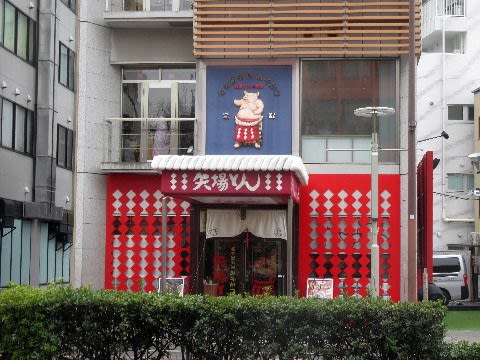


Yokozuna
Yokozuna is the highest rank in sumo wrestling.

YABATON
 DONKATSU YABATON SINCE 1947
DONKATSU YABATON SINCE 1947
일식돈가스우동・
모밀・초밥
|
“DONKATSU YABATON SINCE 1947” is a lie.
“1947” is the year when Japanese YABATON was founded.
Korean YABATON was founded in 2008.
How can Korean have the face to say that?
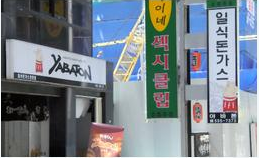
Korean imitation shop of “YABATON”
is running and using the character without permission.
“YABA” is the name of Japanese place. The image of the pig which wears the clothes of “Yokozuna” (Sumo champion) is the same. Nothing seems to be accepted if Japanese appeal something in Korea.
마루가메제면 명동점 (2012)
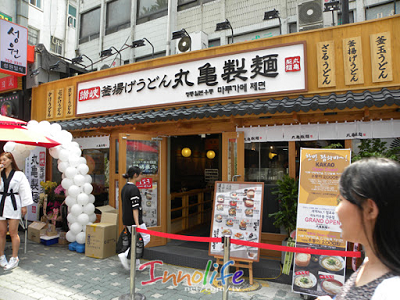

signboard
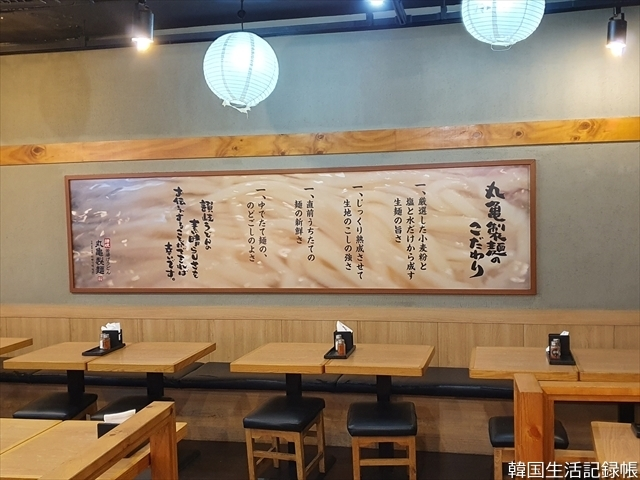
Marugame Seimen’s special attention to the dishes (Myondong store)
一、 じっくり熟成させて生地のこしの強さ
一、 直前うちたての麺の新鮮さ
一、 ゆでたて麺ののどごしのよさ
讃岐うどんの素晴らしさをお伝えすることができれば幸いです
(English translation)
- Good taste of raw noodles made only from wheat flour, salt and the water that are selected carefully
- Dough matured slowly and carefully and strong elasticity of the noodles
- Freshness of noodles made just before eating
- Good feeling of just boiled noodles going down your throat
We are happy if you can know about splendor of the Sanuki-udon.
자가제면 마루 (2021)
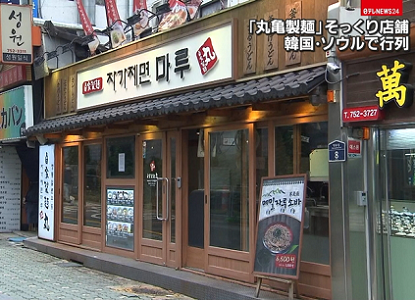

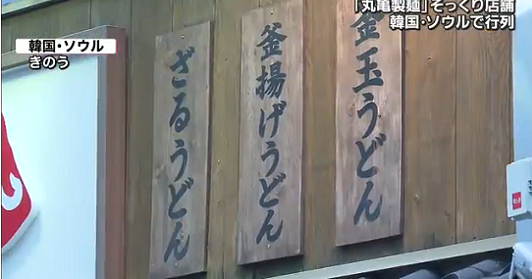
the same signboard
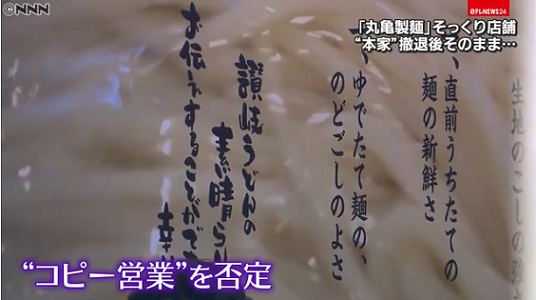
special attention to the dishes written in Japanese same as “Marugame Seimen”
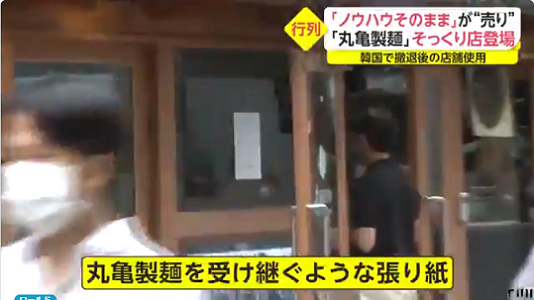
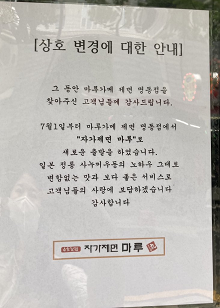
Guidance writes the new restaurant succeeds “Marugame Seimen”.
[상호 변경에 대한 안내]
그 동안 마루가메 제면 명동점을
찾아주신 고객님들께 감사드립니다.
7월1일부터 마루가메 제면 명동점에서
"자가제면 마루"로
새로운 출발을 하였습니다.
일본 정통 사누키우동의 노하우 그대로
변함않는 맛과 보다 좋은 서비스로
고객님들의 사랑에 보답하겠습니다
감사합니다
|
|
We thank the customers who visited Marugame Seimen Myondong store.
Since July 1, we have done the new departure from Marugame Seimen Myondong store to “Chaga Jemyeon Maru”.
We repay visitors’ love with the know-how of the Japanese legitimate Sanuki udon, the unchangeable taste and better service.
Thank you.
|
|
This is similar to “Honda & Suzuki case”.
Korean makers started in joint ventures with Japanese makers. The Korean makers took know-how of Japanese makers and forced them out.
“DAERIM” was an OEM maker of Honda, but it finished OEM suddenly and continues selling motorcycles as self-developed motorcycles. Korean makers thought that they didn’t need Honda if they could catch know-how of Honda.
HYOSUNG was an OEM maker of SUZUKI. After HYOSUNG got know-how of SUZUKI, HYOSUNG broke off the tie-up. HYOSUNG imitated motor scooter of Suzuki and still continues producing it without paying patent fees. In addition, HYOSUNG applied for patents on technical of SUZUKI without SUZUKI’s permission.
Because the Korean government supports the acts of Korean makers, the Japanese makers are in a helpless state.
After “Marugame Seimen” withdrew, the Korean company changes a part of the signboard and runs with the same exterior and interior as “Marugame Seimen”. However, the Korean company denies the copying. (NNN News)
자가제면 마루 ⇒ 아키나이제면 商内製麺


|
|
| 自家製麺 | 아키나이제면 商内製麺 |
| 春夏冬 |
Korean is cunning and is an enthusiastic salesman.
“春夏秋冬” means “four seasons”. “春” is “spring”, “夏” is “summer” and “冬” is “winter”. There is not “fall”. “Fall” is “秋 (aki)” in Japanese. “There is not fall” is “Aki nai” in Japanese. “Akinai” = “商” in Japanese. “内” is also “nai” in Japanese. Only the person who understands Japanese can know the meaning of “春夏冬”.
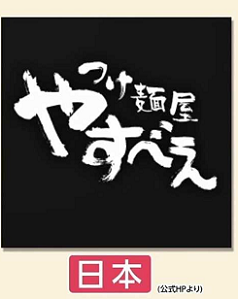
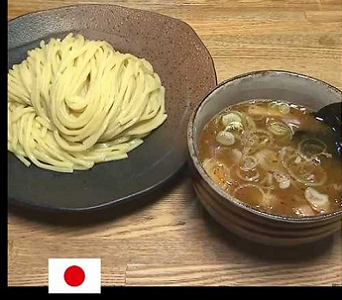


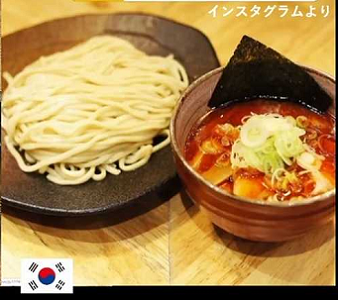
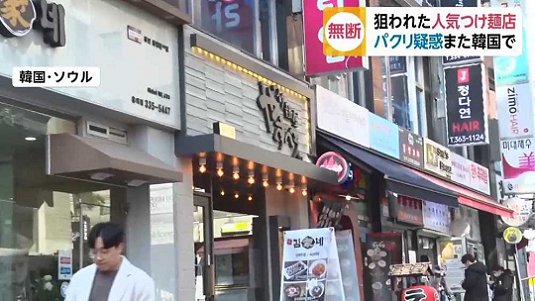
The reporter requested an interview to the shop where J-POP flowed through, but it was refused. The Korean said, “the person in charge is in Japan now. So he is not here”. (FNN PRIME NEWS)
“Tsukemenya Yasubee” writes, “It is very regrettable that customers misunderstand the taste of the products of the imitation shop is ‘the Yasubee’s taste’ that we have created carefully. We are considering a legal response for the Korean imitation shop.” But, even if a Japanese files a suit in Korea, it can not win. This is because there is unwritten law called “The crime against Japanese is innocent (반일무죄)”.






On the other hand, the household goods store “Daiso Korea” appealed for “Dasaso” by a trademark infringement and won the case.
| DAISO Japan | 다이소 Korea | 다사소 |

|

|


|
|
Japan is the heaven for spies, because it does not have the spy prevention law. ↓The excuse of Korean companies |






